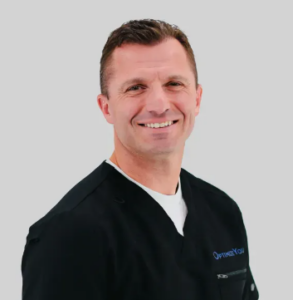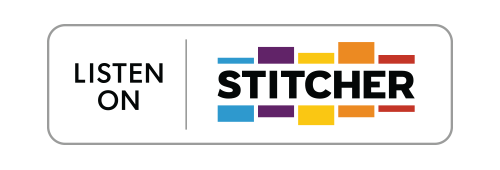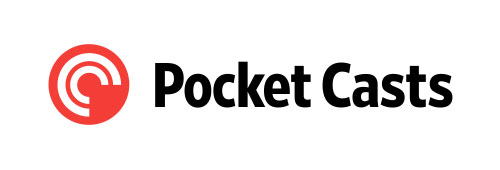 Today, I’m thrilled to have Dr. Trever Wilkins and Carter Kerber from Optimize You Performance Medicine join us. Both of these professionals bring a wealth of experience in the medical field, and together, they are pioneering innovative approaches in regenerative medicine. Dr. Wilkins, a trained emergency medicine physician, and Carter Kerber, a skilled physician assistant, are here to share their insights on how regenerative medicine can revolutionize pain management and healing.
Today, I’m thrilled to have Dr. Trever Wilkins and Carter Kerber from Optimize You Performance Medicine join us. Both of these professionals bring a wealth of experience in the medical field, and together, they are pioneering innovative approaches in regenerative medicine. Dr. Wilkins, a trained emergency medicine physician, and Carter Kerber, a skilled physician assistant, are here to share their insights on how regenerative medicine can revolutionize pain management and healing.
Dr. Wilkins has always been athletically minded, which led him to pursue a degree in exercise physiology before diving into medicine. His experience in emergency medicine revealed a significant gap in addressing chronic conditions and injuries that didn’t require surgery but weren’t responding to traditional treatments. This gap spurred his interest in regenerative medicine, focusing on using the body’s own healing capabilities to treat various ailments.
On the other hand, Carter’s journey began as an emergency medical technician. His diverse experiences in sports and emergency care, combined with a holistic upbringing, naturally drew him to Optimize U Health. His training and passion for helping patients achieve their physical and mental potential align perfectly with the clinic’s mission.
Regenerative Medicine:
Regenerative medicine has seen tremendous advancements, offering alternatives to invasive procedures. Dr. Wilkins and Carter emphasize a minimally invasive approach, using techniques like platelet-rich plasma (PRP) therapy and adipose (fat) tissue treatments to promote healing. These methods leverage the body’s natural healing processes, providing effective pain relief and tissue regeneration.
Adipose Tissue and PRP Therapy:
Dr. Wilkins and Carter have found remarkable success using adipose tissue in conjunction with PRP therapy. Adipose tissue, rich in mesenchymal stem cells, acts as a scaffold and promotes tissue regeneration. This method has shown promising results in treating conditions like osteoarthritis, tendon injuries, and more. By injecting processed adipose tissue into affected areas, patients experience reduced inflammation, enhanced healing, and significant pain relief.
Case Studies and Success Stories:
The team shared numerous success stories, including patients who avoided surgeries and significantly improved their quality of life. For instance, a patient considering knee replacement surgery found remarkable relief and improved function after receiving adipose tissue treatment. These real-world examples highlight the potential of regenerative medicine to transform patient outcomes.
Challenges and Future Directions:
Integrating regenerative medicine into mainstream practice comes with challenges, including limited insurance coverage. However, the team at Optimize U Health remains committed to educating patients and advocating for broader acceptance of these innovative treatments. By focusing on personalized care and advanced medical techniques, they aim to bridge the gap between conventional medicine and cutting-edge regenerative therapies.
Conclusion:
Dr. Trever Wilkins and Carter Kerber are at the forefront of regenerative medicine, offering hope and healing to patients seeking alternatives to invasive procedures. Their dedication to patient-centered care and innovative treatments positions Optimize U Health as a leader in the field. To learn more about their work and explore treatment options, visit optimizeyouhealth.com.
Thank you and happy listening!
You may also refer to the transcripts below for the full transciption (not edited) of the interview.
Greg Voisen
Well, welcome back to Inside Personal growth. This is Greg Voisen, the host of Inside Personal Growth. And the two guys on the other side of the screen over there, I got to get a smile out of him because it's Thursday. And the reality is, is that I assist a company called Cell max. And I'm involved in the healthcare field in many different ways, all the way from developing helping develop apps for Mayo Clinic, to speaking with gentleman like themselves, to the right of you on the screen for those of you who are actually watching this on YouTube, is Dr. Trever Wilkins. And to the left of you on the screen is Carter Kerber. And both of them, I have an organization called optimizeyouhealth.com. There, we'll put a link in the blog to that as well. I'm gonna let him know a little bit about you Dr. Wilkins. He's a do director of medicine at optimize U. He's a trained emergency medicine physician with a passion for cutting edge health modalities, and well over a decade of experience in the medical field. He graduated from medical school at Kirksville College of Osteopathic Medicine in 2010. Man during his time he spent in the ER, he developed the notion of providing a regenerative approach using one's own body to assist in the healing of many ailments. If you want to learn more about him, you can go to the website. Again that's optimize your health and that's optimize you health. I'm sorry.com Carter actually works with Dr. Wilkins and he is at optimize health as well as a physician assistant, but he's really more than a physician assistant. He's got amazing credentials. He had a CES certification began his career as an EMT providing critical care in time sensitive situations. After three and a half years of service he moved on to working in the ER where he taught to be was taught to be calm and methodical, even in tough situations. Carter then attended PA school and the rotation train of Midwestern University in Glendale, where he found his passion and helping others reach their full physical and mental potential and performance and medicine. Again, you can find more about him at the website as well. Well, both of you, gentlemen, thank you for joining us, you both have tremendous backgrounds. And, Trevor, I just want to throw this out. You in that little bio, you told the bit about it. Both of you can comment on this, if you would. Regenerative Medicine Today, has expanded so far, and there's been so many advancements in it. And it's doing so much to help people heal pain. Basically, why did you guys get into this? And why have you kind of chosen the alternative route versus more invasive procedures?
Dr. Trever Wilkins
Oh, thank you so much. And thanks for having us. By the way, you know, I like to think that I've always been athletically minded. And so from a young age, always thinking about what I could do to perform better. And, you know, that led to an exercise physiology degree, and then decided to go into medicine, and then really became intrigued with emergency medicine just with the pace and, and, and I still do that, and I love it. But doing emergency medicine. You know, aside from these, these Big Cypress procedures and interventions, there was just this obvious lack of what was what was needed by the community. And over after a few years, and the emergency department that started to weigh on me and I started to look at, you know, these people are coming in and a lot of them aren't getting the answers that they need. And that started me on a journey about learning about what else is there that can really address some of these underlying issues. And that ultimately led to this regenerative approach with an emphasis on lifestyle and really focusing and really embracing that. That part of health which is so crucial. And in in that I was able to discover in conjunction with conventional evidence-based medicine that there's so much more that's out there to offer. There's a huge gap between conservative medicine and surgery. And there were so many people that I was just seen on a regular basis that were in that gap. We weren't surgical candidates, they weren't getting better. And being a dead case,
Greg Voisen
It’s interesting you say that, Trevor, because we've had a couple other physicians on one in particular, Dr. Jeff Larson, who was neurosurgeon and back surgeon, he basically, for a large degree of his patients quit doing it. There's been many doctors who've written books saying, we're not going to do back surgery because it's not working. And I've cited that meaning that it's actually worse after the back surgery not I'm saying in all cases, I don't want to be an advocate for people to say no, don't do back surgery. But on the other hand, you know, when you look at a shoulder pain or a knee pain, or hip pain, I hear the stories about people afterwards. And I realized that not only is it a long healing process, it can be very excruciating pain. Now, Carter for you, you have a similar background in this can you tell us a little bit about why you are so you know, ready and willing to join optimize your health and Trevor to kind of get into this?
Carter Kerber
Yeah, of course. Well, once again, thank you for having us on. Kind of funny yeah, I mean, I have a background in emergency medical technician did that for three and a half years so undergrad, medical biology major minor in chemistry, math. Also work in Sioux Falls severity er as a patient care technician for a good two years so get into PA school, automatically thought I was gonna be doing something emergency I thought about being even like a combat tech technician in the military. However, during my er rotation actually, is when I found optimize, and I actually, you know, reached out set up a kind of a student rotation with them. I, I was interested in that sports, orthopedic side of things just I was kind of I call myself a a jack of all trades, master of none, because I did wrestling, track swimming, tennis, you know, football, basketball, pretty much everything that you could do. And so I love staying active getting outside and, and my mom, for sure, I have to thank her. She's super holistic, you know, fed me, she wouldn't even buy me baby food, she would make her own baby food. So like combined a bunch of vegetables, blend them together. And and so I definitely feel good. And thank her for that pathway as well. But yeah, Trevor took me on, they set up a I did some rotations, and then hired me on to do a short fellowship, specifically training knee and musculoskeletal or ultra sound, you know, these orthopedic procedures for hormone replacement therapy, peptide therapy, bunch of kind of cool, innovative stuff. And that's, that kind of led them out.
Greg Voisen
Well, it's good to have both of you on and I know one of the I told Trevor about this in a pre interview that I was just at Dr. Steve Berman's house of emergency room doctor, he became a hypnotherapist and is now working with Andrew Weil, and the noetic Institute. And you know, he's that's over in Arizona, where you guys are, again, for everybody there in Chandler, Arizona, if you want to check them out, go to the website again, optimize you health.com. That's where you'll find out they're in Chandler. And both of these gentlemen are really cutting edge at what they're doing. And I like the whole area of Noetic. Medicine, the whole idea of the way you communicate with your patient is really the way they can heal. The you know, you tell somebody, they have cancer and you go well, you only got a 10% chance, you know of survival. That's not the story they want to hear. They want to hear something encouraging from the physician. So there's been major studies done and you guys know, and I know both of you treat your patients this way, because I can tell you're really treating them very holistically saying, Hey, look at this, on the bright side, there's a much better way to go about this and a better way to look at it. And I believe there's such a strong connection between the neurosciences going on up here and what's happening down in the body. So with that being said, you guys approach everything with like really minimally invasive stuff, you're not going in to make big cuts and pull things out and do whatever you're saying the body can heal itself. So how were you first introduced in intelli fat beauty kits? And what are your initial impressions of their potential for pain management, and so on. So what's really happened with you guys with that?
Dr. Trever Wilkins
Yeah, with once again, kind of the common theme is we didn't have all the tool sets that we needed in conventional medicine, we can use some of those for for certain situations, you know, in the ER somebody needs It's a bone reduced or cardioversion or something like that. That's great. But we we started with different we've been using, we've been using PRP, platelet rich plasma therapy where you take the blood for a while for for years and have really good results with it. And we went to a conference, very reputable Toby conference. And we were seeing just really good new studies, where you know, a lot of MDS videos, were starting or starting to publish the effects of adipose specifically. And what really caught our attention at that conference was the actual properties of the atopos could be used as scaffolding. And so if you had like a large tear this up a lot of times, historically, when we would require surgery, you could actually go in and with once again, ultrasound is such a huge innovation part of the progression of medicine right now. But you can see those defects and use adipose tissues as not only just a regenerative part of the treatment, where the cells are differentiating and becoming the tenants stronger and better compared to surgery, where oftentimes you're taking away are using a cadaver tendon. But you have that property plus almost a scaffolding, where you backfill it in like potty, it would do it in and they were showing case after case where the you know, a year later, you couldn't tell that there was a defect to begin with. And the MRIs would actually thought that it was a cadaver lab because it replaced the tissue. So well. And so we started thinking about these cases. And, and, you know, the FDA kind of made a little bit more challenging a few years ago to get into this when we thought we need to do this. And we found a way and and, and to do it right, and within the bounds of practicing medicine safely. And and we have been so happy since we've done it because the effects have just have given us even more capability than what we had had been used before PRP, which is still awesome. And we still use. But the when we found out about that utilize it, we've been so pleased with results
Greg Voisen
that the Intel effect kits have worked well. And this isn't really this is not meant to be a commercial. What we're really trying to do is educate people, that there are alternative ways, right? And there are alternative ways. I mean, look, you use other things besides the intelli fat kid as well. I'll be honest with you, I just went down and got a red light laser treatment on a Thor machine for my knee that Dr. Berman did for me. And he doesn't like every other because I got hit by a dog in a dog park and he knocked me off my feet. And I can tell you after six treatments with the red light and the laser on the Thor machine, which is not a cheap machine, to literally put it on there and heat it up and do it. This knee is like almost, it's like literally healed since since I got hit by that dog. And I was in excruciating pain. So I'm not saying hey, you got to go get intelli fat. But if you have cases where you guys believe intelli fat can work, and you pull out the adipose and you filter it, and then after you filter it after you filter it, you literally end up with the fat that you can inject back into either the shoulder, the knee or the hip or wherever you're doing it. So this this question, basically coming up here, Carter, is for you. It's kind of around the mechanism. Can you explain how the intelli fat kit works? What's the scientific principles behind it, their effectiveness in treating the pain because of all of the things you could do? We've heard from doctor after doctor after doctor, and we're glad to have you guys on as well, that it has worked phenomenally well about 85% of the time that we're seeing huge improvements after six weeks now there is some swelling. We understand that. But the reality is, you know, tell us a little bit about it. You're the one that's doing it.
Carter Kerber
Yeah, yeah, I mean, I'm just implementation implementing an idea that Trevor brought but the the intellifax I also want to thank like the Toby in Aom conferences as well. Some cool areas, conferences were innovative physicians meet up and they also were able to elaborate and explain a lot of things to us as well. But the Intel effect kits are pretty neat. We, you know, we started off doing a lot of PRP therapy with a to m trying to decrease arthritis progression. It works great for a lot of soft tissue repairs, tendons, ligaments, but we wanted to do something that hit like osteoarthritis a little bit harder, like almost irreversible degeneration, and there's not a whole lot other than, you know, surgery or steroid injections, which we know don't ever last. And so that the very basics at the very basics, the adipose stem cell procedure just seems to be super advanced to the point where I found out that there was more mesenchymal stem cells actually in your fat tissue than there was mesenchymal stem cells per volume in bone marrow, I'll bet there is more bone marrow stem cells, just different versions of them. But when when we kind of found that out now, we know that when we when we concentrate that and we actually use it with PRP, the the adipose stem cells and those lipid cells will actually create like an extracellular matrix. And then in doing so, a diff does some cell differentiation. And so it can actually increase blood flow, some angiogenesis to the area. Stimulating you know, not only just almost like a patchwork, but Fibro cartilage repair, and most of the cartilage in like a need for say, is Highland cartilage, but replacing that is extremely difficult. And with the adipose stem cells, it almost acts as a filler regenerator vascularisation promoter and it is like a combination of PRP, hyaluronic acid injections on steroids.
Greg Voisen
You know, say this, you say this hate to interrupt you. But I remember speaking with a doctor on this podcast, and he said, not only in an invasive surgery, like a disc surgery on the back, we literally use the Intel effect kit, after in the healing time was cut in less than half as a result of actually doing the injections after doing a disk repair and a surgery, which just is mind blowing when you think about it, because there you are. I mean, it's right on top of something where somebody had invasive yet, they could have gone on for a long time to heal. But the healing was response was just phenomenal. Make sense?
Greg Voisen
Do you have some case studies, Trevor, have people where you both have utilized these intelli fat and the adipose on the patients and their success rate? I mean, you have any stories that our listeners would know, yeah, yeah, I, you know, I had a sore shoulder, but I couldn't play golf, or I couldn't play tennis or I couldn't do the sports I want or I couldn't run because the knee was bad, or whatever it might be. You have any great stories?
Carter Kerber
I'd love to hear that. Yeah, that extracellular matrix can stimulate that a cell signaling pathway, it just it's like, it's like taking us satellite and distributing it multiple times. And that in itself helps, you know, tell the body well, this is what we need to repair. Let's let's go down and do do more than what it already does.
Dr. Trever Wilkins
i Yeah, for sure. And the response from the patients has exceeded expectation, and just what the mechanism once again, like you can't come up with a better drug if you try because it has anti inflammatory properties. It has the actual, you know, kind of putty property to it, where it fills, and then it has the regrowth component to it. And well, we just today, we had a patient that was following up for something else. And we're, you know, just caught him in the hall and how are you doing? He was so happy, his pains improved, he's able to already do more. And this is a month out from from the procedure. And it really makes sense when you think about those properties that has the anti inflammatory, it has some cushioning in there, in addition to the growth, but I mean, that's literally today before we came
Carter Kerber
in, he actually was about to get a knee replacement through mail and was just kind of searching on alternative options. Yeah, it you know, it's nice to hear that people are hearing about this, but a lot of people don't know that they have these options.
Greg Voisen
I mean, is he gonna was he gonna go to the Scottsdale clinic there? And again, the male. Yeah, it's interesting, because I've worked with them. We actually the company that I helped with the app, developed an app for physical therapists. That is the was the 20 for Life app. It's now being used at Mayo, and it has 2000 videos with exercises on it and all that kind of stuff. So really interesting. So what are some of the challenges you face when integrating regenerative medicine technologies like Intel effect kits into your practice? And how do you guys address any of these challenges that you might have? One of the challenges we know, we're from outside is, hey, this is great stuff. But right now, the insurance carriers aren't covering it. Let's talk a little bit about that.
Dr. Trever Wilkins
Thank you. Yeah, once again, you know, one of the kind of the themes that we've that led to the creation of this practice, is the shortcomings in conventional medicine. And along with that, I mean, the hospitals are literally failing, like, and it's a failed system, yet, patients still have that mindset of, I have insurance, you know, take take care of, you know, all my problems. But unfortunately, there's a lot of shortcomings with this medical system that we have that I'm sorry, it's kind of hard to say, but it's, it's failed. The way that it's been set up, even despite amazing Madison is the delivery of it. But patients have this mindset. Understandably, that, hey, I'm paying a ton of money for insurance. Why is insurance not covering this? And you know, what it one of the ways that we approach it is, you know, first of all, like we, we really emphasize and focus on that individualized treatments, there's so many patients that we get story after story where I'm not heard, I'm kind of pushed along, and not heard. And when we have the time to sit down and talk to them, and educate them, and we'll tell them, we do everything that all the conventional medicine will do it, and we do it when it makes sense to do it. But we want to educate you on what's available. And unfortunately, this type of medicine is far more advanced than our failing medical system, unfortunately, which they really should catch on to it because, you know, some of these regenerative treatments I'll be at they are, you know, the there isn't investment, it's, it's less with time and resources compared to surgery.
Greg Voisen
So if you take into consideration Pardon me, but you know, in conventional medicine, a doctor comes in and says, Let's do the knee and you got $50,000 in any versus $5,000 in an injection from here, it's 1/10 the cost and we know from a sustainability standpoint, that these kink things can work for six 810 years. It just depends on the lifestyle people adopt after they do this, eating better exercising, doing all the things properly that they need to do, even in your later years, you know, lifting weights doing stuff like that, that make it better in comments from you guys.
Dr. Trever Wilkins
Well, yeah, absolutely. Not to mention, some of the cases that we've had so far with stem cells are people that have already had surgery. And just because you have surgery doesn't mean that it's going to resolve the problem. We have a lot. A lot of cases like this. Just recently, yeah. Do you
Carter Kerber
do you want do you want lineman big guy, he's 28 to lateral meniscus tear when he was in his final year of college. And they ended up you know, they thought a lot. I'm not sure how complex the tear was prior to the surgery, but they ended up doing a complete lateral meniscectomy. And I mean, now he is great for contemplation on the on that lateral tibial and plateau and condyle. And we trim it that's kind of where that mechanism of action comes into play. Like I thought what can I do to almost create a scaffolding to help support the need because it's grinding where it's not supposed to? And yeah, I mean, we did stem cells combined it with PRP and then did another PRP in a month and you know, that we reached out to him a couple couple of weeks ago about eight months later and he's you know, less knee clicking he said it would pop out of place multiple times a day. He it no more constant aching. He's almost pain free and maybe a one if he exercises a little bit too hard, but then that ended up going away. And so yeah, I mean, we're really pleased with how it's turning.
Greg Voisen
Have you did you guys use intelli fat on him or just the PRP or did you use both telephony?
Dr. Trever Wilkins
With with Intel fat, the processing the way that it's created like we, we believe like we we think that it is the best way to do it. That's it, we want the best results. And that's why we chose Intel fat light and we like it once again. The results have exceeded our expectations. Sorry.
Carter Kerber
Go ahead. You're I might have missed your question. Were you saying did we use it with PRP product
Greg Voisen
Well, it sounds like you, you did PRP and intelli fat? Or did you just use until the fat? You did both? We
Dr. Trever Wilkins
can't Yeah, we often will do a combination. Well,
Greg Voisen
it sounds like he had a really severe case. So I could see where it was probably necessary. And so you started a little bit less strong with the PRP. And then you ended up doing the Intel a fat after you did it. It was one of the later procedures would that be right? Or was it the first year
Carter Kerber
actually combined on same day. And so I, I actually want to give a shout out to Paul Portland, he runs the New England Stem Cell Institute, he we've been communicating back and forth. And we've kind of adopted some of his plans as well, where you use PRP same day. And that actually helps provide an environment for the stem cells to survive, and gives more platelets and growth factors and angiogenesis stimulating factors. So it can it can build those new blood flow pathways. So the tissue actually becomes a live organism. It's not just an injection, it's, it's part of your body at that point. So
Greg Voisen
well, you know, Paul, torque, torque, Lin has done several videos for us. And so I think we got to you as a result of Dr. toward one. So we're very, very familiar with Dr. torlon. Because he uses a lot of our kids every month. So it's it's good. So question for you on, you know, where's this headed? Can you discuss any case or clinical evidence, and I know we've got some, but I thought maybe you guys that support the use of intelli fat kits, obviously, you understand the process, you know how this works? You've been trained and doing it and injecting it into the patients. Anything that you found additionally, that would help somebody who's listening to this, whether they're a physician or a patient, say, hey, there is clinical evidence about this.
Dr. Trever Wilkins
Yeah, the it is in its infancy, and there are so many physicians that are starting to publish them out that will come with and that that continues to increase with time. And, and that's important, and we embrace evidence based medicine. And we continue to see more and more evidence, whether it's imaging, like even even ourselves with the ultrasound that we'll do, we're seeing obvious changes, in addition to the clinical effects. But once again, I think that it's important to also give the experience in the practice of medicine is due respect. Because the evidence is is emerging. But we're seeing on a daily basis, the feedback that we that we get from the patients. And I think that the statistic that you mentioned with 85% success rate, we are certainly seeing at least that, like we're getting good response with with every patient, that we that we've done
Greg Voisen
that adipose treatment, well, we're actually seeing long term results too. So these aren't like okay, I injected you in a year later, nothing, we're actually actually seeing long term healing rate. So it's really a good effect. And it's it's a really a strong vote for the use of fat in injectables or atopos. To actually do this. Now, you guys are using all kinds of other things in your practice to have been to your website, you're kind of leaders in regenerative medicine and the way in which you approach it. Where do you see this headed in the next 510 years, especially with advancements in minimally invasive technologies? That would be one thing. I mean, look, we're, we're growing cells now, right? Now, instead of taking them out of your body, although the FDA says you have to inject those bacteria and for anyone listening within, you got to do it the same day, the process has to be within the same day. So unless that law changes, I don't think growing cells outside is going to be something we might be doing. Do you see any other things?
Dr. Trever Wilkins
I think what, what I see is conventional medicine, having a lot of shortcomings, and even even doing this for a few years. Each year, more and more people are approaching us with with regenerative medicine. And the I mean the the future is now with with what we have. And I think the first task and the reason we're so glad that you are have a mission to spread this message and we want to spread it to is we have so many there's so many regenerative treatments that people just don't under is available or don't know how to get. And I think that we're going to see people continue to look at answers that they're not getting from conventional medicine. And they're getting it. And I think the more people that learn about the options with regenerative medicine, we're gonna continue to see more and more people start to invest in themselves and hopefully, conventional medicine to follow suit.
Carter Kerber
Yeah, I would, I would like to go off of that, too. You said, talking about what we what else we can implement in the body works on the outside as well, it is on the inside, right. And so we're trying to incorporate like, hormone replacement therapy, natural ways to decrease cardiovascular disease, focus on peptides that stimulate
Carter Kerber
tissue repair on their own, or release more levels of your own growth
Carter Kerber
hormone to kind of fight that aging response. I would say I would say the hardest part about all of this is we have an abundance of things that we can do. All righty, the hardest part is integrating it into each individual person as specific as possible. But yeah, no, I mean, absolutely falling in love with the field. And I want to keep progressing
Carter Kerber
it with Trevor.
Greg Voisen
I think one of the things I recently heard guys, and I don't know if you can attest to this, but you know how we get body scans. And if you go to a hospital, because there's the machine there to do it, they're now saying that we're going to get to a point where we could do a full body scan, which I think, you know, looking for osteoarthritis looking for challenges that we're having internally, including heart issues and so on, it seems like it might be moving in a wave toward conventional medicine adopting it, because they can prevent challenges that are going to cost them more money, actually, from an insurance standpoint. So what I'm hoping is that people like you and other doctors who are using our kids are going to be at the forefront there, obviously, are right now at the forefront of it and bring heightened awareness to honestly really the insurance carriers to say, Okay, we're going to start covering this, because you're paying us a heavy premium anyway. And by the way, it's going to save us money actually. And long term, it's going to cost us less money. Because really, that's what we've got to look at is the optimal health, like you guys optimize you health. I mean, we have to look at optimal health. And we have to look at longevity. I mean, people like who are doing podcasts out there every day doctors that have kind of taken like you guys have, they've said no, we're not going to do traditional medicine. And one of them is Dr. Peter Attia has a huge podcast show listened by 1000s of people around longevity, wrote a book on longevity, we're starting to see at the forefront of the spear. People are interested this are really taking a hold and saying, Hey, I'm going to do something about my own health. I'm not going to wait for somebody to tell me. Are you finding that to and your practice?
Dr. Trever Wilkins
You though said so well. And I appreciate that. And we're seeing that. And sometimes the future might be going back to the past and doing the fundamentals. Well, that should have been done right the first time. Right, we quite frankly, need to just look at the failure for what it is. For example, I have a 40 year old patient does CrossFit every day and mindful of what he eats, doing the right things, and his cholesterol was off just a little bit. And so we said you know, like, traditionally it would be Hey, you know, lifestyle modification. We said you know what, let's take this a step. Step further, we did a screening exam exam with a with a coronary calcium score. It turns out that he was moderate high risk for, for for arterial disease. He was a walking time bomb at 40, despite very small changes in his cholesterol that 99% of the time and conventional medicine would would be overlooked. We've been able to intervene, get everything perfect. We use it once again, conventional medicine pharmaceutically. And then once again, really taking seriously the lifestyle modifications, details, not just not just empty words about hey, nutrition doing, you know, these general guidelines that nobody's going to do but meeting with the trainer and nutritionist. And that you think about what would happen if we were caught this 10 years from now when he was completely occluded. And he was in the emergency department for a Widowmaker it was a guy with young with young children and so yeah, the you know, I think I think
Greg Voisen
well you know, you you guys probably know this and I'll probably it's you're speaking to the choir here but over here where I live and by San Diego, there is two machines, one at UCSD and another one in Encinitas, the city that I live in, where collateral arteries are actually being forced to grow as a result of compression. So they're actually compressing the arms and the legs in the body and you go through these treatments, it's about $6,000. But the reality is, is if you look at Dr. Gandhi, who's written, there's been paper and paper written, these people will come in who've had triple bypass, and then they say, now you got another bypass, they go through this process with actually developing greater collateral arteries. Now, I think one of the best ways to develop collateral arteries is obviously exercise, right? And the more you exercise, the more collateral you're going to have. But for people maybe a little bit more sedentary and aren't doing that, this machine compresses you, and actually creates the collateral arteries. And people are up doing what they were doing and lifestyle change and no triple bypass. Right? So I mean, it's pretty, it's pretty amazing where we've gone with this alternative therapy. Again, it is alternative, but it should be conventional, it should be something we're doing instead of going in and cracking someone's chest and opening up and, you know, taking the vein out of their leg and putting in the artery and it should be hey, let's try this first. Right, let's, let's do this. So, go ahead. What not react, let's
Carter Kerber
just be proactive.
Greg Voisen
Yeah, well, what advice? Oh, go ahead. Go ahead, Trevor.
Dr. Trever Wilkins
Oh, I was just commenting on what you were saying. But I think conventional medicine lags so far behind the innovations. And so having, once again, that's what we love about our practices, we can we can stay ahead of the curve and not be limited with with some of those things that you're talking about. Because you're 100%, right, like the thought of cracking open somebody's chest. Instead of doing some compression, you look at the risk versus benefit. There's, there's no question
Greg Voisen
about that. Yeah. Well, look, you guys have been wonderful being on the show and have a final question here. What advice would you give patients who are listening to the show, or other physicians who are regular MDS or whatever, who are considering changing their practice, about the use of regenerative medicine treatments for pain management, for almost many of the things you're treating, I'd love to get you to give us a give our listeners some advice.
Dr. Trever Wilkins
You know, I I am a huge proponent of patients educating themselves as much as possible. And we have so much available to us. And I and I have 100% confidence, and I see it when when, when patients learn about what's available. The it makes the decision, you know, very easy a lot of time with, with making the decision to use some more of these innovative approaches that are, quite frankly, just less invasive. And so sometimes in medicine doctors get get upset that people are consulting Dr. Google, I say, please consult Dr. Google. And then let's have a conversation about let's work together. Because medical degree is on Google. It's all out there.
Greg Voisen
Or it's Dr. Chat GBT now. Because I've never found something that can't even need to check it out. But I'll tell people type in almost any question. And Mr. Chat, GBT is going to come back with some kind of answer. Now, it might be wrong. But the reality is, there's a lot of truth in there as well. So you have to filter through it. But we have more information at hand. Yes, we seem to see, we seem to be a little bit dense about how we could go about doing this. And I think the key here today is we have two professionals that have been on the line with us. One a doctor, the other one a PT, I'm just going to say your PT because that's what's on your deal. But you're more than that. Yeah. And the reality is, is that, you know, with lifestyle changes with using things like the intelli fat kits, where your pain is today, it could certainly be relieved as a result of looking at some alternatives whether it's intelli fat or something else. We're How do you guys keep yourself up dated on all the developments in this field and what new things or methods are you thinking about adopting or have adopted or where do you see it going?
Dr. Trever Wilkins
Yeah, the you know, the, the go back to the advice of other physicians is what we've we found ourselves It's, it is just as always learning there is so much available at our fingertips. There's so many awesome webinars by reputable organizations that are available very conveniently, that we try to take, take advantage of, you know, some of these organizations ALM Toby, there's more that are providing so much information and doing it in a in the validated scientific method that we're used to, with our, with our formal training. And so we we love those conferences we love, we love seeing other providers that are that are doing what we can do it right, as we like to think where they're, they're just using the best medicine, they're open minded, they're there, they're innovative. And so we try to do that. And we really try to embrace what you here's the cliche is the practice of medicine. And it's, it's understanding that we come up with unique problems. And instead of trying to put everybody into a few diagnoses and treatments, it's really understanding that process and taking each taken each of the complaints at face value and not being dismissive with the patients, but it's a continual learning program that we just we just loved, especially getting the results. You know, one of the things that we're really looking at with the with the with next app is, is advanced, expanded laboratory tests with looking at the genetic component in really being able to fine tune these treatments that we're already doing, like once again, using given using a adipose treatment on somebody, we know that if they're if their health and we understand their genetics, we understand, you know, the gut biome, all those things that we can do to create the best healing environment, the more success you're gonna have. And so we're really, really interested in those adjunct treatments and really expanding and taking advantage of these these testing.
Greg Voisen
Yeah, it's important, Carter, any parting words from you, Carter?
Carter Kerber
Yeah, I mean, Trump does a good job of explaining all that. But, but I kind of look at every patient as a as an opportunity for learning. I hate that there's been, you know, I mean, younger provider. And so I kind of liked that aspect of it, because I have so much more to learn. And I've also learned so much just in the field, but like, in my first rotation is outpatient. It was outpatient internal medicine, it's like I would see a patient have have a problem or a symptom, maybe put on a medication, you know, a couple years later, whatever they have, they're developing other symptoms. And the next thing you know, you're prescribing a medication that's never existed in our environment naturally ever, and you're treating symptoms because of medications with more medications. The next thing, you know, they're in 20 Plus medications, I just want to let people know, like, don't be afraid to tackle any problem. Like if you've come across something that you're not sure of, or you're scared to take, take, take a gander at, like, you know, use it as a learning experience. And I try to follow up even patients that I refer out, I want to know, like if there was something else that they they were able to achieve. And there's a lot of patients that have been looking for, you know, years for some sort of relief, and were their last hope. And now they're, you know, lifelong patients. And so I just think every every opportunity that you learn, you have to advance and learn, you know, look it up chat CBT other medical websites, you know, webinars, everything. So,
Greg Voisen
yeah, well, that's a good point. And I was gonna say, because I think that Trevor and I discussed this on our pre interview. You know, Dan Buettner has been on this show, and he's the guy that did the Blue Zones, right. And the important thing about Blue Zones is all about longevity. Where did these blue zones exist, and then what happens in those blue zones, what's actually happening? And the reality is what you guys are doing around lifestyle is really what creates longevity in our life. And the important thing is, is people want longevity, but they also want it without pain. So the additionally you're creating the without pain part of it, because an older person wants to be able to walk three miles a day without having that pain in their hip or their knee or their shoulder or whatever. So my hat's off to both of you for doing what you do. For all of my listeners, you can go to www optimize iu health.com. If you're in the Chandler Arizona area, or any of the surrounding Arizona areas, please check out their clinic. Check out Trevor Wilkins. He certainly is somebody who's very well known in this thing and Carter and give them a call. Actually, you know, go in or text the person at the bottom of their website. They're asking a question it's been a pleasure having you guys both on inside personal growth and I look forward to having you back again someday soon
Dr. Trever Wilkins
Oh thank you so much it's been a pleasure thanks Greg Nice to meet you
Greg Voisen
Nice to meet you.
Sign up to receive email updates
Enter your name and email address below and I'll send you periodic updates about the podcast.











Leave a Reply